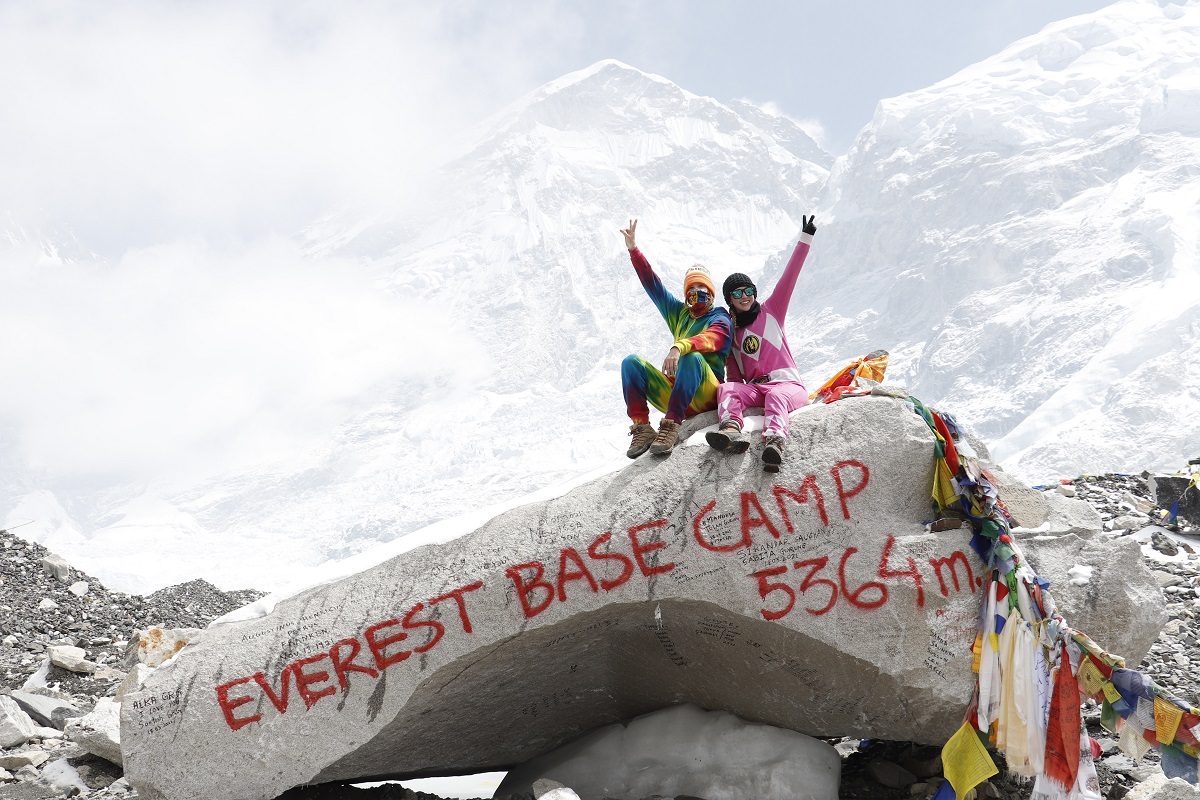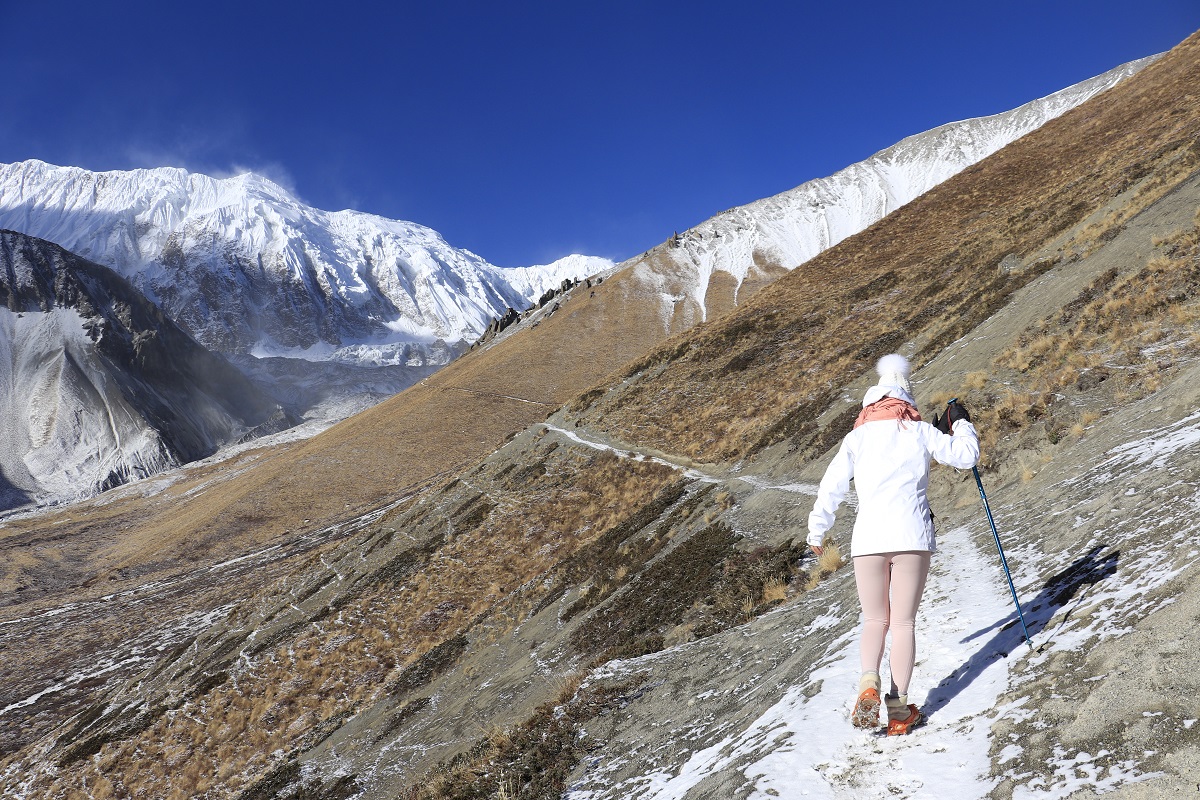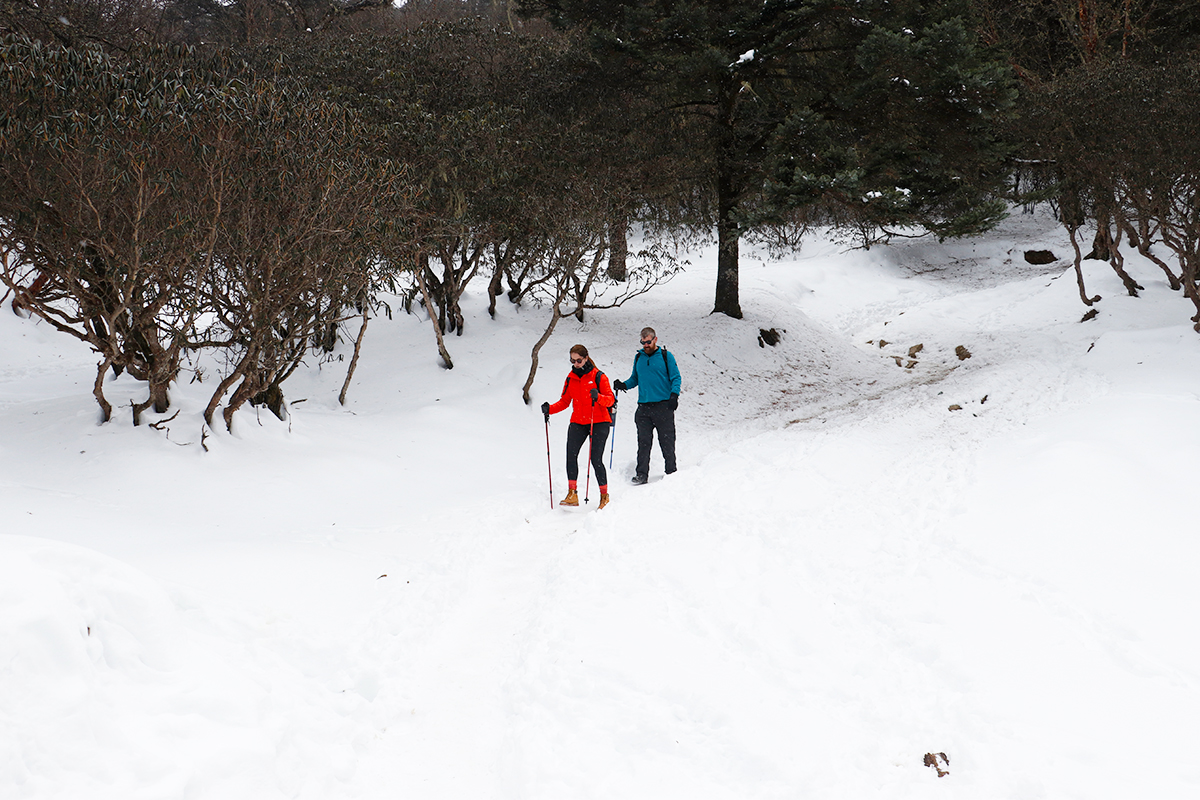Trekking in Nepal is a wonderful journey that offers an astonishing variety of choices from adventure, cultural experience, and unique biodiversity each with unique attributes of its own. While trekking in Nepal and Everest region, there are a lot of things you must know before you plan for your journey. One of the major factors that play a significant role in trekking in the Everest region is the season. Most of the trekkers choose either spring or autumn for the Everest Base Camp trek because it’s more comfortable in terms of weather, climate, landscape, and other ideal factors. But, many adventure seekers are likely to experience trekking during the winter season as well. For that, you must go beyond some limits of regular treks but it will be worth pushing yourself for such an adventurous journey.

The winter season in Nepal starts from December to February and it’s a very peaceful time for exploring around the mighty Himalayas. During the winter season, very few people make their plans for Nepal, especially in the Himalayas like Everest Region for trekking. There will be chances of heavy snowfall, the trail might be blocked due to the snow and it won’t be that comfortable like normal trekking season in Nepal. However, trekking is still possible and undoubtedly, the winter vibes look more beautiful and attractive in the high Himalayas. The Winter season has its own unique beauty where snowy peaks cover the horizon, the weather mostly looks more clear after heavy snowfall. Everest Base Camp trek during winter is challenging for sure. With the proper gears, equipment, preparation, and motivation, one can undoubtedly be doable. It will be one of the great experiences for those who want to force themselves beyond the limit of mountains. Not only high altitude trek like Everest Base Camp, but you can also look for short treks up to 4,000m altitude.
Highlights of winter treks in Everest Base Camp
- Scenic and dramatic flight from Kathmandu to Lukla Airport. Lukla Airport is considered one of the most extreme airports in the world.
- Trekking inside the Sagarmatha National Park, a popular and renowned UNESCO World Heritage Site.
- Experience the amazing hospitality in the popular sherpa capital in Namche Bazaar.
- Snowy trails, snowfall, and snow-capped mountains everywhere.
- Get to know more details about the Sherpa culture, mountain people, their religion, and traditions in different villages along the trail.
- Get a chance to experience the world-class adventure with snowy trails, which looks like an off-the-beaten trail.
- Visit Tengboche monastery, the largest monastery of the Khumbu region.
- Stunning views of the world’s highest mountains like Mt. Everest, Lhotse, Cho-Oyu, Makalu along with iconic Ama Dablam, Pumori, Nuptse, and many more.
- Get a chance to encounter exotic wildlife of Sagarmatha National Park like Himalayan Monal, Mountain Tahr, Musk Deer, Snow Leopard, and many more rare and endangered species.
- Visit picturesque Sherpa villages like Phakding, Khumjung, Pangboche, Dingboche, Pheriche, and Lobuche.
When is the winter season in Nepal?
Normally, winter begins from Mid December and continues to February. This season is the coldest season in Nepal. The temperature all over Nepal and especially in mountains will drop as you ascend higher. Above 2,500m+, the temperature will drop up to zero. During the daytime, it will remain warm but morning, evening, and night, it will be freezing cold.
What is the weather in Everest Base Camp during winter?
Everest Base Camp trek starts from Lukla which lies at 2,840m altitude and during winter you can experience zero temperature normally. Afterward, the higher you ascend, it will become colder. During the daytime, you can experience a warmer environment but during the morning and evening, the temperature will go below freezing point. In the Everest Base Camp, the temperature during winter remains from -5°C maximum to -20°C minimum on an average. During this wintertime, the temperature normally drops below the freezing point at night and morning throughout the Everest Region. This is the peak season of winter. During the winter season, you can experience more windy weather as well but days are mostly clean, clear, and sunny. So, you can experience the majestic views of snow-capped mountains and stunning landscapes.

What are the things to bring during the winter trek to Everest Base Camp?
Since you are trekking during the winter, you should be extra careful and prepare for this trekking. Winter is the coldest season throughout the year. So, warm clothes, shoes with strong grips will be the most needed ones. You must have a thick and warm sleeping bag as the blanket provided by the teahouse won’t be enough for saving yourself from freezing cold. Warm jackets, trekking pants, additional warm shocks, woolen hats, gloves, and neck cover should be with you. Besides this, sunscreen and sunglasses are the essential ones. If possible, get the hot bag also, so that you can put it in your bed before sleeping. It helps to make your bed warm throughout the night.
Is solo trek possible during the winter season in Everest Base Camp trek?
Normally, the Everest region is one of the most popular and renowned trekking trails in the world as well as in Nepal. Many people trek solo or without the help of any local agency during the peak trekking season. But, we highly recommend trekking with a guide and local travel agency during the winter season in Nepal. The first reason is, it’s too difficult to find the trail on snowy land everywhere. Second, it’s the coldest season of the year, so you need proper guidance and information to trek during the winter season. Third is, most teahouses are closed and it’s difficult to find an open one for the accommodations and fooding. So, we don’t recommend trekking solo during the winter season in Nepal.

What are the benefits of trekking in the Everest region during the winter season?
Mountains give different vibes in different seasons. Most people have experience of mountain vibes and its habits only in the comfortable season ( which is Spring and Autumn). But, the atmosphere of winter in the mountains is always fabulous. You can experience something different, unique than another season. Here, we write some of the benefits of doing winter treks in the Everest Region.
- Accommodations will be easier and hospitality service will be amazing as they will have very few people to host. Normally, during the prime trekking season, the tea houses usually get packed with foreigners, and sometimes it’s difficult to get the room also.
- The trail will be more peaceful and silent. So, you will get a chance to experience and explore each and every tiny thing in the mountains. The peaceful environment and silent trails are always connected with nature. So, in this season you can experience nature from the closest.
- The flights scheduled from Kathmandu to Lukla would be easier as you will get the tickets easily. Normally, in the peak season, the hectic part of the Everest Base Camp trek is a flight to Lukla.
- The snowy peaks look more bright and have fewer chances of getting rain. As a result, you can experience stunning views of mountains and sunset as well. SUnset on snow-capped mountains is always rare and mostly happens during the winter season.
Besides these benefits, there are a few things you must know before planning for the Everest Base Camp trek during the winter.
- Altitude sickness would be the normal problem of high altitude trekking. So, drink enough water, stay warm, eat enough calories and take essential rest and acclimatization.
- During winter, there are more chances of getting snow on the trail and you might face heavy snowfall as well. For all these situations, you must prepare yourself with all the gears and need to prepare mentally as well. So, adding a few more days to your itinerary is highly recommended.
- The days will be shorter during the winter season. So, try to start the trek in the early morning and make your camp shorter and doable as well. In such a case, you won’t get stuck in snowfall and won’t get cold because of wind and freezing temperature.

More useful tips for trekking in Everest Region during the Winter Season
- Carry all the required gears and equipment which is essential for winter treks.
- Do not plan for high pass, high altitude, and extreme trekking during the winter season.
- Bring some extra foods like protein bars, dry nuts, and chocolates. As there will be fewer hotels and they have limited items for the food.
- Bring thick layers of jackets, trousers, gloves and socks, and warm hats.
- Check the weather forecast daily as much as possible and get all the necessary information from your guide every day.
At last, trekking in Everest Region during the winter is not easy as compared to peak season. But it’s doable with safety and proper guidance. For the stunning views of mountains, getting closer to nature and trekking hassle-free and the environment are the best things during trekking in winter. Please go through our complete guide for the Everest base camp trek for more information. Feel free to contact us anytime for the trekking and tour activities in Nepal.






